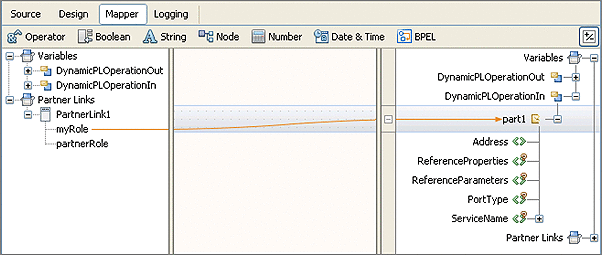Sending Service Endpoint References
A service can send its own endpoints, that can then be used as call back addresses, using the following type of mapping.

The PartnerLink1 myRole is mapped to the DynamicPLOperationIn part1. This generates the following code sample.
<assign name="Assign2">
<copy>
<from partnerLink="PartnerLink1" endpointReference="myRole"/>
<to variable="DynamicPLOperationIn" part="part1"/>
</copy>
</assign>
|
When the variable “DynamicPLOperationIn” is used in subsequent invokes in the BPEL, the endpoint information is passed on to the partner.
Note –
The BPEL Specification states that only the partner address can be changed dynamically. In BPEL terms, this means that only the partnerRole of a partner link can be assigned a value, and myRole does not change after the BPEL process has been deployed.
- © 2010, Oracle Corporation and/or its affiliates
